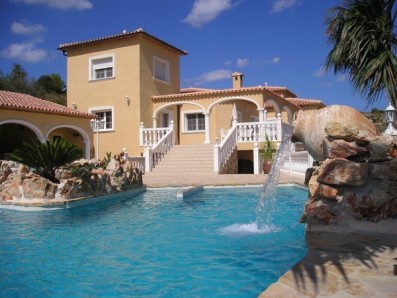
Another year, another strong 12 months for Spanish property.
While 2016 may have been a pretty dark year in general, pockmarked by conflict, terror, war and a litany of celebrity deaths, for Spain it was another 12 months along the road to recovery, both economic and social.
And for Spain’s property sector, 2016 was endlessly uplifting, with each month proving stronger than the last. VIVA takes a look back at how the first six months of 2016 panned out for the industry, and Spain in general…
January: Brits splash the cash
Data published in mid-January revealed that of the more than €65 billion spent by tourists in Spain in 2015, over €13 billion of that was spent by British holidaymakers. This represented an 8.9% increase on the year before, with the average Brit spending €111 per day while on holiday in Spain while collectively, Brits were worth €40 million a day to the Spanish economy in 2015.
February: Spain’s north/south divide
Property assessment portal Kelisto.es found in February that Spain, much like the UK, has a distinct north/south divide, particularly when it comes to living and property costs. But unlike the UK, it is Spain’s south that offers the best value for money, with living costs some 12-15% below the national average in many southern cities and towns. As for property, an average 80 square metre home costs just €131,000 in the south, compared to between €241,000 to €328,000 in northern cities.

March: Arrivals rise 14%
Easter this year fell in March, which helped to boost early tourism figures in Spain. Data from Spain’s aviation industry showed that the country welcomed more than 16 million people through its airports that month, which represented a massive 14% increase on the same month in 2015, and was the first tangible sign of what would become a record-breaking year for Spanish tourism.
April: The GMT issue
With Spanish politics in deadlock, acting Prime Minister Mariano Rajoy said that his People’s Party (PP) would consider the adoption of Greenwich Mean Time (GMT) if he was to win re-election. Well, that happened a few months ago, and the message is the same: Spain is likely to shift its clocks forwards one hour to bring the nation in line with not only its geography at the west of the continent, but also the rest of Europe, where most countries abide by the time zone best suited to their location.

May: Think like Bill Gates
Not for nothing is Bill Gates regularly labelled the World’s Richest Man: his nous and investment savvy is legendary, and his geeky demeanour belies a sharp brain and a competitive streak. So when Gates invested more than €100 million in Spanish property in 2013, eyebrows were raised. Spanish property investment in 2013 was seen as something of a busted flush, but Gates is not your average investor – he saw the long game, identified the forthcoming recovery and is now reaping the rewards. So if you fancy thinking like Bill, then read this.
June: Price increases expected until 2025
As summer approached, Spain’s tourism sector was already in full swing by the time José Luis Suárez, a professor of financial management at the IESE business school forecast that Spanish property prices are expected to continue rising until at least 2025. According to the professor’s calculations, home values in 2025 will be an average of 40% higher than today, and would also drive a demand for new builds nationwide, with as many as 140,000 new properties being built in Spain annually by that date.
Don’t miss tomorrow’s Year in Review part II, when we look back at the months July-December.
 en
en



 Vlaams-Nederlands
Vlaams-Nederlands
0 Comments
Leave a Comment
DISCLAIMER
The opinions and comments expressed by contributors to this Blog are theirs alone and do not necessarily reflect the views of VIVA Homes Under the Sun Ltd, any of its associated companies, or employees; nor is VIVA to be held responsible or accountable for the accuracy of any of the information supplied.
Have you got something to say?